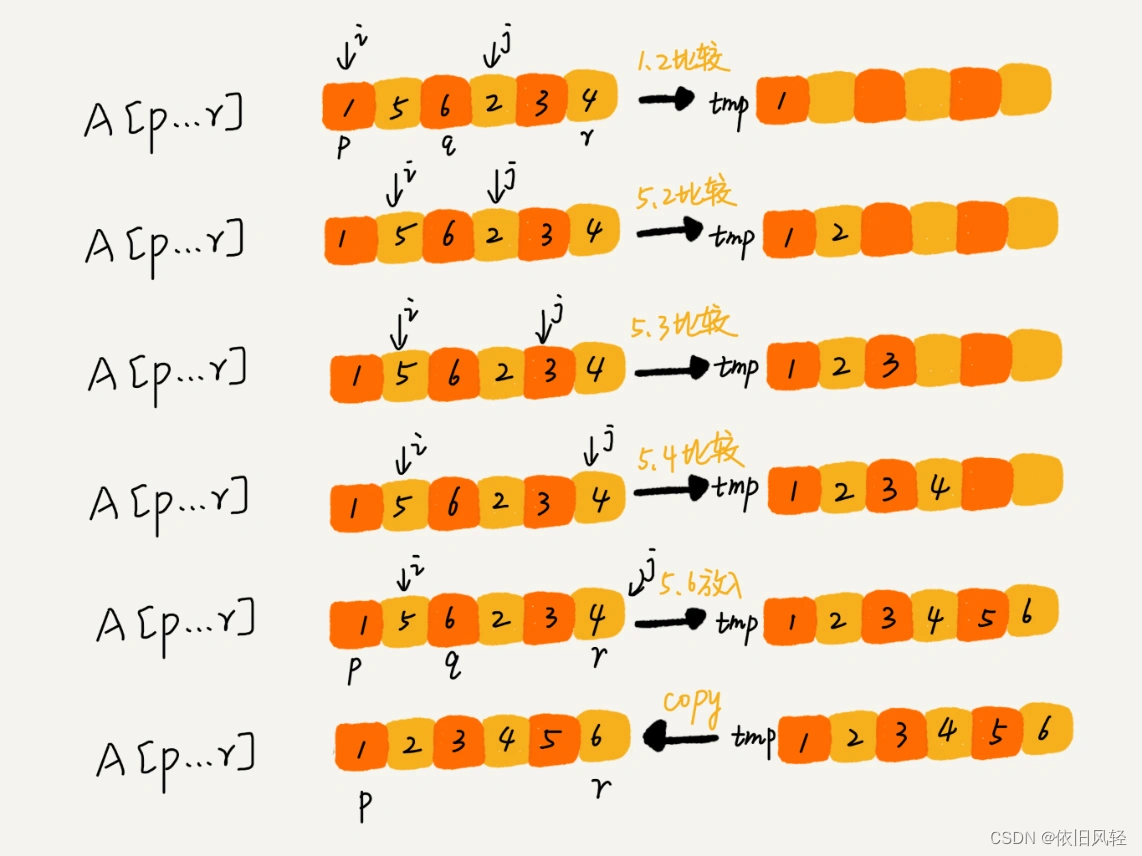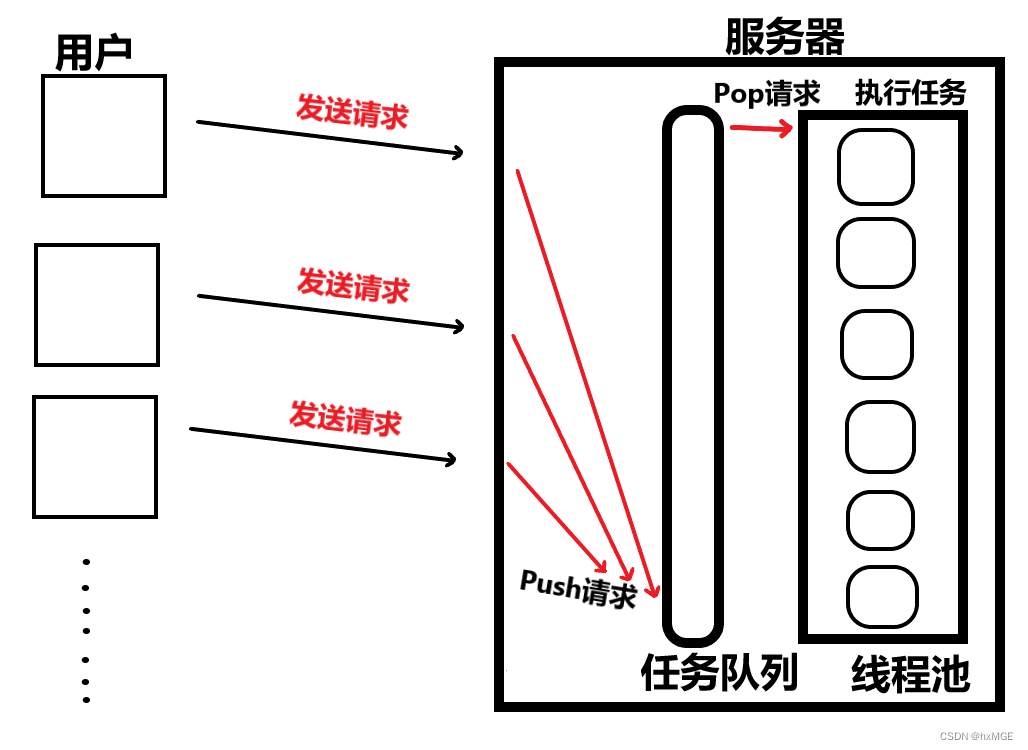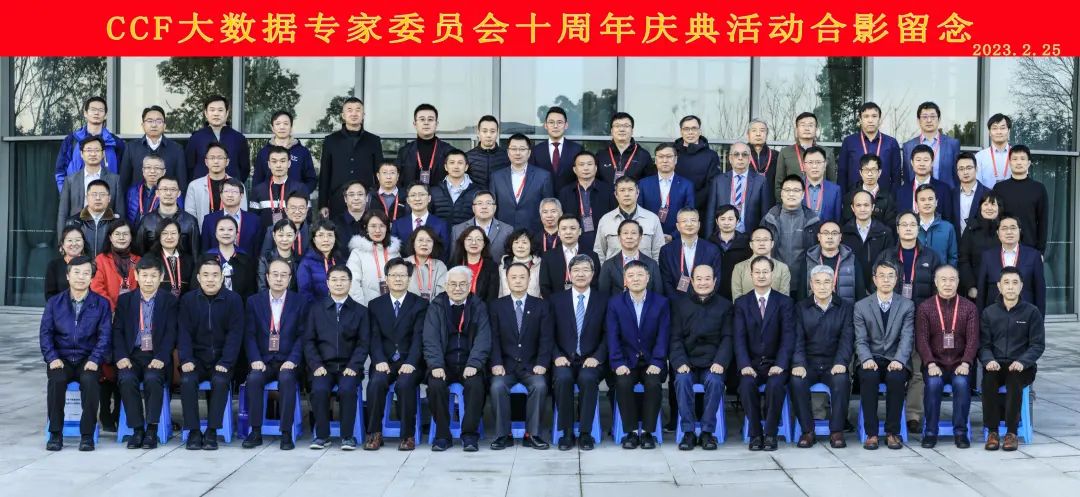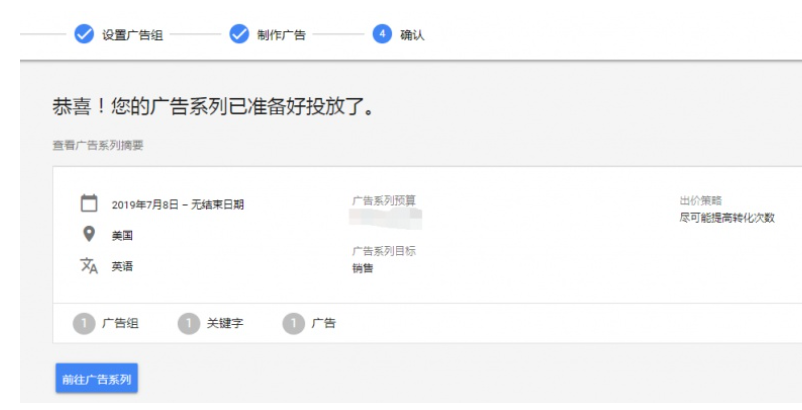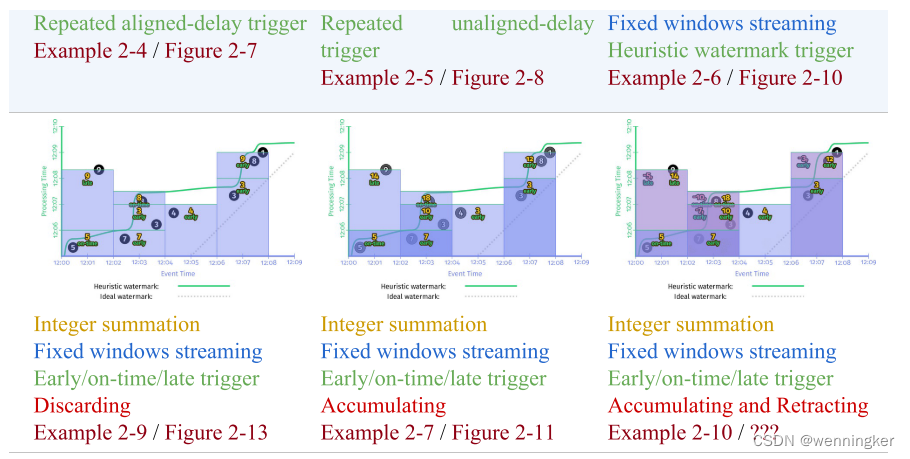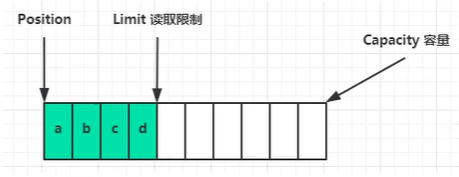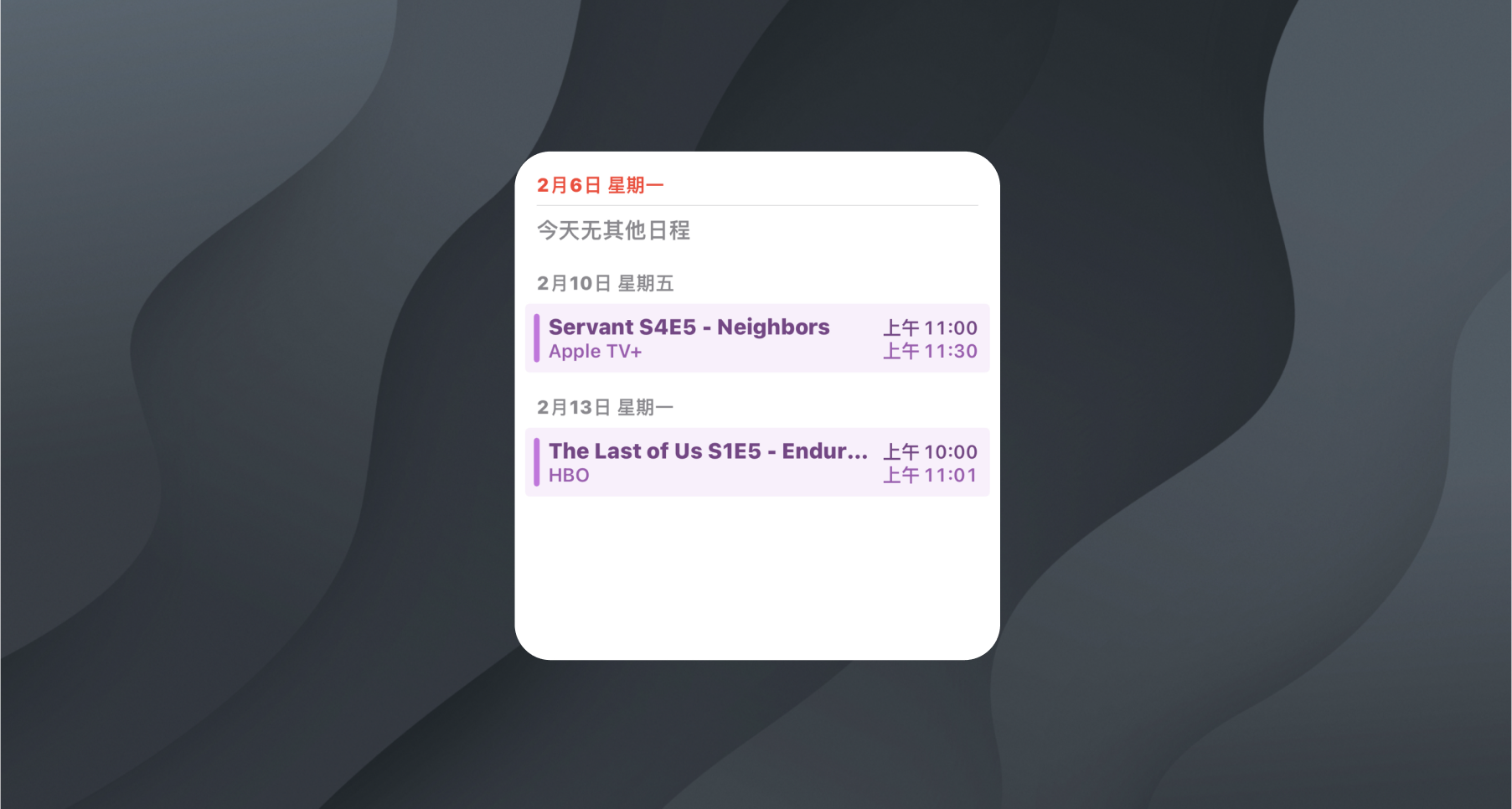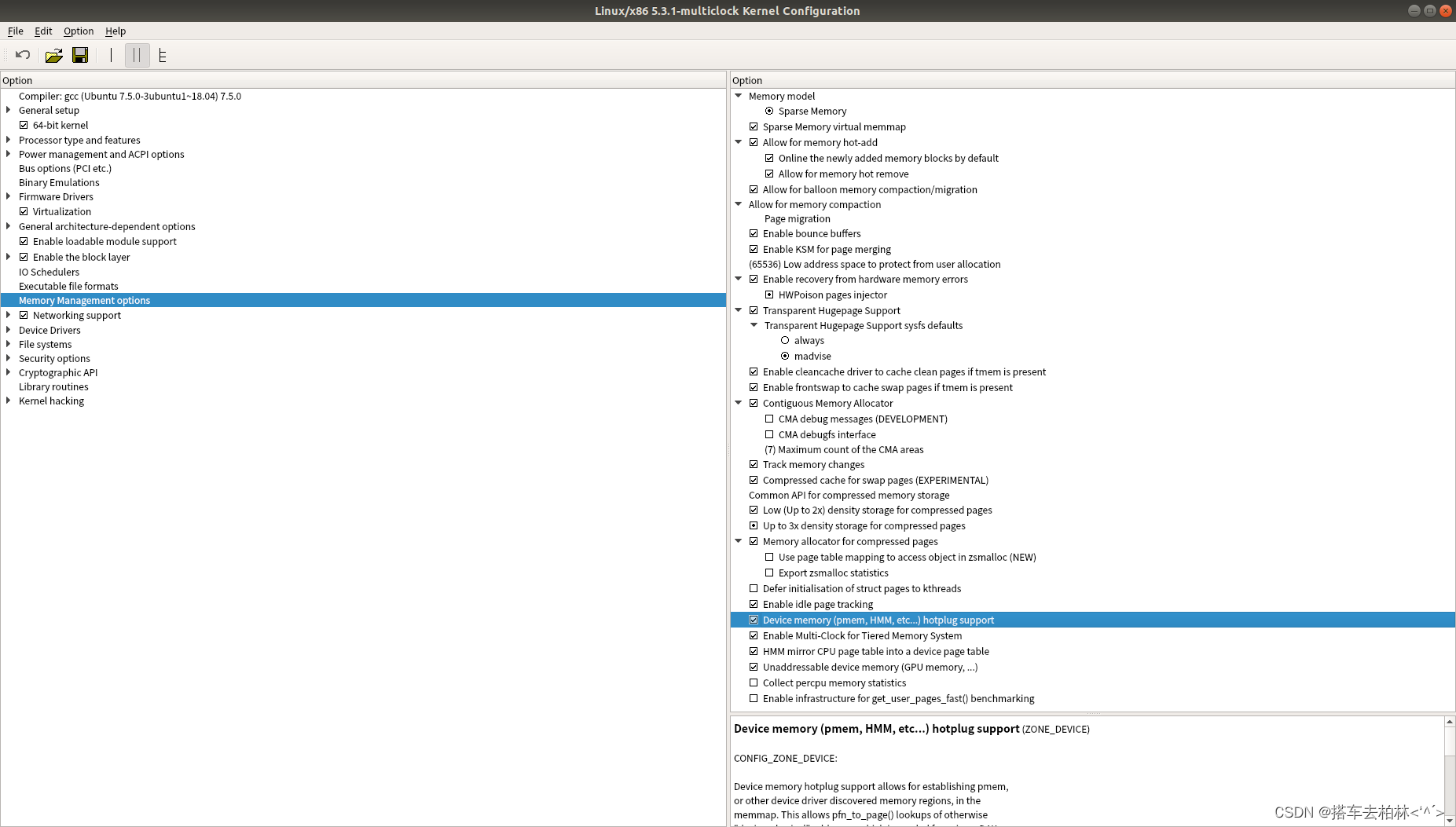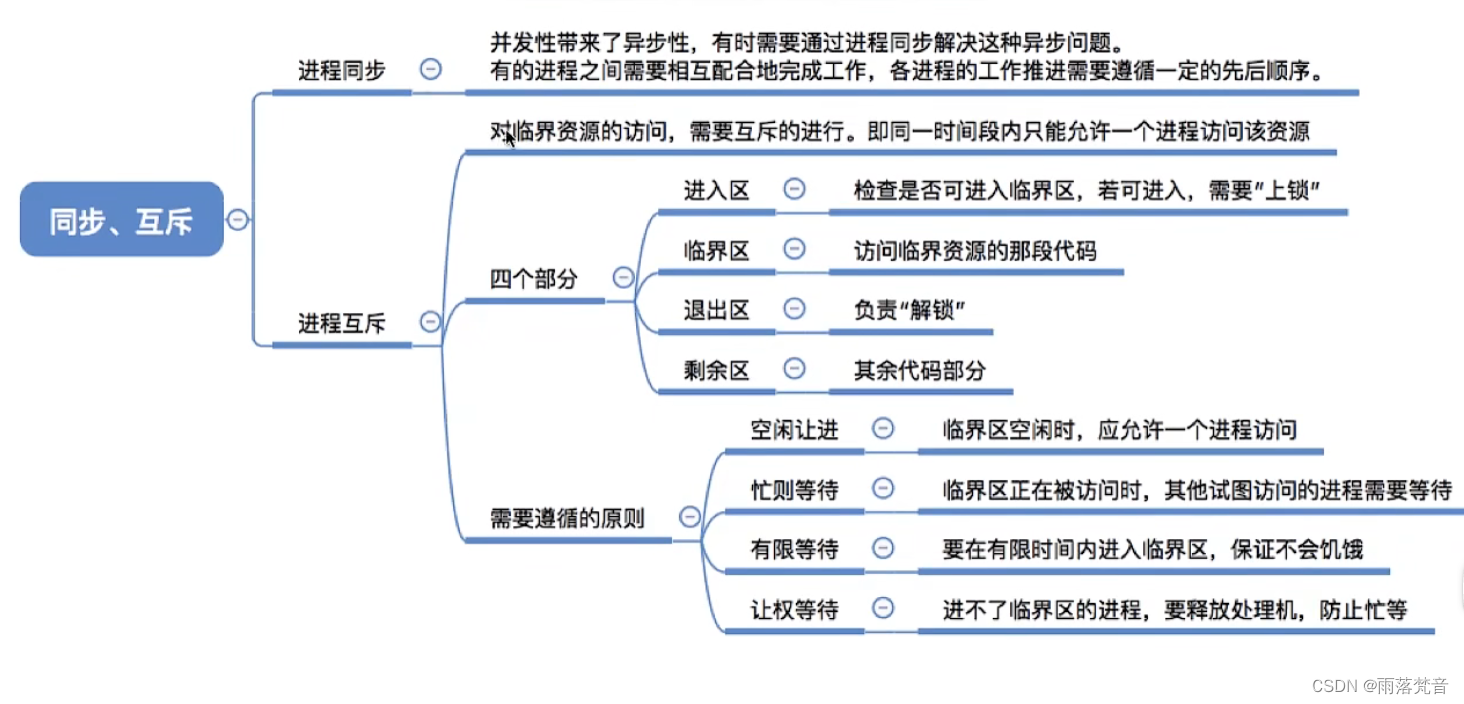文章目录
- 一、MetaObject基本使用
- 二、关键类源码分析
- 1、MetaObject的构造方法
- 2、PropertyTokenizer分词器
- 3、BeanWrapper
- 4、MetaClass
- 5、DefaultReflectorFactory
- 6、Reflector
- 7、总结
- 三、MetaObject的getValue源码分析
- 写在后面
一、MetaObject基本使用
public class User {
private int id;
private String name;
private String phoneNumber;
private User child;
List<User> users;
private List<String> likes;
Map<String, String> labels;
// get set
}
Object user = new User();
Configuration configuration = new Configuration();
MetaObject metaObject = configuration.newMetaObject(user);
// 直接属性赋值
metaObject.setValue("name", "zhangsan");
System.out.println(metaObject.getValue("name"));
// 子属性赋值,对象为null会自动创建,并填充属性值
metaObject.setValue("child.name", "lisi");
System.out.println(metaObject.getValue("child.name"));
// 查找驼峰属性 phoneNumber
System.out.println(metaObject.findProperty("phone_number", true));
// 操作数组,基于索引操作数组
ArrayList<String> strings = new ArrayList<>();
strings.add("sing");
strings.add("run");
metaObject.setValue("likes", strings);
System.out.println(metaObject.getValue("likes"));
System.out.println(metaObject.getValue("likes[0]")); // 获取第一个
// 操作Map
metaObject.setValue("labels", new HashMap<String, String>());
metaObject.setValue("labels[red]", "like");
metaObject.setValue("labels[blue]", "notLike");
System.out.println(metaObject.getValue("labels"));
System.out.println(metaObject.getValue("labels[red]"));
MetaObject是一个强大的反射工具类,
支持查找属性(忽略大小写、支持驼峰、支持子属性)、
查找子属性(“user.name”、"users[0].id"获取集合中子属性的值、"user[name]"获取map)、
支持设置子属性(自动创建子属性,必须带有空参构造方法且不能是集合)。
MetaObject工具类不止设置、查找属性值,还提供了获取set、get方法、查找属性值等反射常用方法。
二、关键类源码分析
1、MetaObject的构造方法
调用MetaObject 的forObject方法,可以将Object对象转换成BeanWrapper对象,最终调用了new BeanWrapper
private MetaObject(Object object, ObjectFactory objectFactory, ObjectWrapperFactory objectWrapperFactory, ReflectorFactory reflectorFactory) {
this.originalObject = object;
this.objectFactory = objectFactory;
this.objectWrapperFactory = objectWrapperFactory;
this.reflectorFactory = reflectorFactory;
if (object instanceof ObjectWrapper) {
this.objectWrapper = (ObjectWrapper) object;
} else if (objectWrapperFactory.hasWrapperFor(object)) {
this.objectWrapper = objectWrapperFactory.getWrapperFor(this, object);
} else if (object instanceof Map) {
this.objectWrapper = new MapWrapper(this, (Map) object);
} else if (object instanceof Collection) {
this.objectWrapper = new CollectionWrapper(this, (Collection) object);
} else { // 普通类
this.objectWrapper = new BeanWrapper(this, object);
}
}
public static MetaObject forObject(Object object, ObjectFactory objectFactory, ObjectWrapperFactory objectWrapperFactory, ReflectorFactory reflectorFactory) {
if (object == null) {
return SystemMetaObject.NULL_META_OBJECT;
} else {
return new MetaObject(object, objectFactory, objectWrapperFactory, reflectorFactory);
}
}
2、PropertyTokenizer分词器
public class PropertyTokenizer implements Iterator<PropertyTokenizer> {
private String name; // 属性名称
private final String indexedName; // 带着索引的属性名称
private String index; // 索引(如果有的话)
private final String children; // 除了indexedName之外的剩余的表达式名称
// 构造方法,根据 . 来进行分词,分词完毕后会将以上四个属性初始化好
public PropertyTokenizer(String fullname) {
int delim = fullname.indexOf('.');
if (delim > -1) {
name = fullname.substring(0, delim);
children = fullname.substring(delim + 1);
} else {
name = fullname;
children = null;
}
indexedName = name;
delim = name.indexOf('[');
if (delim > -1) {
index = name.substring(delim + 1, name.length() - 1);
name = name.substring(0, delim);
}
}
public String getName() {
return name;
}
public String getIndex() {
return index;
}
public String getIndexedName() {
return indexedName;
}
public String getChildren() {
return children;
}
// 判断是否有子节点
@Override
public boolean hasNext() {
return children != null;
}
// 创建子节点时,也是new一个PropertyTokenizer分词器,重复操作
@Override
public PropertyTokenizer next() {
return new PropertyTokenizer(children);
}
@Override
public void remove() {
throw new UnsupportedOperationException("Remove is not supported, as it has no meaning in the context of properties.");
}
}
3、BeanWrapper
BeanWrapper的构造方法,将原始对象和metaObject对象进行存储,并调用MetaClass的forClass方法,解析Object原始对象的基本数据。
BeanWrapper中提供了获取Object原始对象的 设置值、获取值、获取getset方法、获取属性、获取setget类型等等一系列核心操作方法,最终都是委派给MetaClass 来实现的。
public class BeanWrapper extends BaseWrapper {
private final Object object;
private final MetaClass metaClass;
public BeanWrapper(MetaObject metaObject, Object object) {
super(metaObject);
this.object = object;
this.metaClass = MetaClass.forClass(object.getClass(), metaObject.getReflectorFactory());
}
@Override
public Object get(PropertyTokenizer prop) {
if (prop.getIndex() != null) {
Object collection = resolveCollection(prop, object);
return getCollectionValue(prop, collection);
} else {
return getBeanProperty(prop, object);
}
}
@Override
public void set(PropertyTokenizer prop, Object value) {
if (prop.getIndex() != null) {
Object collection = resolveCollection(prop, object);
setCollectionValue(prop, collection, value);
} else {
setBeanProperty(prop, object, value);
}
}
@Override
public String findProperty(String name, boolean useCamelCaseMapping) {
return metaClass.findProperty(name, useCamelCaseMapping);
}
@Override
public String[] getGetterNames() {
return metaClass.getGetterNames();
}
@Override
public String[] getSetterNames() {
return metaClass.getSetterNames();
}
@Override
public Class<?> getSetterType(String name) {
PropertyTokenizer prop = new PropertyTokenizer(name);
if (prop.hasNext()) {
MetaObject metaValue = metaObject.metaObjectForProperty(prop.getIndexedName());
if (metaValue == SystemMetaObject.NULL_META_OBJECT) {
return metaClass.getSetterType(name);
} else {
return metaValue.getSetterType(prop.getChildren());
}
} else {
return metaClass.getSetterType(name);
}
}
@Override
public Class<?> getGetterType(String name) {
PropertyTokenizer prop = new PropertyTokenizer(name);
if (prop.hasNext()) {
MetaObject metaValue = metaObject.metaObjectForProperty(prop.getIndexedName());
if (metaValue == SystemMetaObject.NULL_META_OBJECT) {
return metaClass.getGetterType(name);
} else {
return metaValue.getGetterType(prop.getChildren());
}
} else {
return metaClass.getGetterType(name);
}
}
@Override
public boolean hasSetter(String name) {
PropertyTokenizer prop = new PropertyTokenizer(name);
if (prop.hasNext()) {
if (metaClass.hasSetter(prop.getIndexedName())) {
MetaObject metaValue = metaObject.metaObjectForProperty(prop.getIndexedName());
if (metaValue == SystemMetaObject.NULL_META_OBJECT) {
return metaClass.hasSetter(name);
} else {
return metaValue.hasSetter(prop.getChildren());
}
} else {
return false;
}
} else {
return metaClass.hasSetter(name);
}
}
@Override
public boolean hasGetter(String name) {
PropertyTokenizer prop = new PropertyTokenizer(name);
if (prop.hasNext()) {
if (metaClass.hasGetter(prop.getIndexedName())) {
MetaObject metaValue = metaObject.metaObjectForProperty(prop.getIndexedName());
if (metaValue == SystemMetaObject.NULL_META_OBJECT) {
return metaClass.hasGetter(name);
} else {
return metaValue.hasGetter(prop.getChildren());
}
} else {
return false;
}
} else {
return metaClass.hasGetter(name);
}
}
@Override
public MetaObject instantiatePropertyValue(String name, PropertyTokenizer prop, ObjectFactory objectFactory) {
MetaObject metaValue;
Class<?> type = getSetterType(prop.getName());
try {
Object newObject = objectFactory.create(type);
metaValue = MetaObject.forObject(newObject, metaObject.getObjectFactory(), metaObject.getObjectWrapperFactory(), metaObject.getReflectorFactory());
set(prop, newObject);
} catch (Exception e) {
throw new ReflectionException("Cannot set value of property '" + name + "' because '" + name + "' is null and cannot be instantiated on instance of " + type.getName() + ". Cause:" + e.toString(), e);
}
return metaValue;
}
private Object getBeanProperty(PropertyTokenizer prop, Object object) {
try {
Invoker method = metaClass.getGetInvoker(prop.getName());
try {
return method.invoke(object, NO_ARGUMENTS);
} catch (Throwable t) {
throw ExceptionUtil.unwrapThrowable(t);
}
} catch (RuntimeException e) {
throw e;
} catch (Throwable t) {
throw new ReflectionException("Could not get property '" + prop.getName() + "' from " + object.getClass() + ". Cause: " + t.toString(), t);
}
}
private void setBeanProperty(PropertyTokenizer prop, Object object, Object value) {
try {
Invoker method = metaClass.getSetInvoker(prop.getName());
Object[] params = {value};
try {
method.invoke(object, params);
} catch (Throwable t) {
throw ExceptionUtil.unwrapThrowable(t);
}
} catch (Throwable t) {
throw new ReflectionException("Could not set property '" + prop.getName() + "' of '" + object.getClass() + "' with value '" + value + "' Cause: " + t.toString(), t);
}
}
@Override
public boolean isCollection() {
return false;
}
@Override
public void add(Object element) {
throw new UnsupportedOperationException();
}
@Override
public <E> void addAll(List<E> list) {
throw new UnsupportedOperationException();
}
}
4、MetaClass
在MetaClass的构造方法中,通过ReflectorFactory反射工厂的findForClass,将原始的Object进行解析,最终将解析的结果存放到Reflector成员变量中。
在MetaClass的核心方法,大多数操作的底层都是操作Reflector来进行实现的。
public class MetaClass {
private final ReflectorFactory reflectorFactory;
private final Reflector reflector;
private MetaClass(Class<?> type, ReflectorFactory reflectorFactory) {
this.reflectorFactory = reflectorFactory;
this.reflector = reflectorFactory.findForClass(type);
}
public static MetaClass forClass(Class<?> type, ReflectorFactory reflectorFactory) {
return new MetaClass(type, reflectorFactory);
}
public MetaClass metaClassForProperty(String name) {
Class<?> propType = reflector.getGetterType(name);
return MetaClass.forClass(propType, reflectorFactory);
}
public String findProperty(String name) {
StringBuilder prop = buildProperty(name, new StringBuilder());
return prop.length() > 0 ? prop.toString() : null;
}
public String findProperty(String name, boolean useCamelCaseMapping) {
if (useCamelCaseMapping) {
name = name.replace("_", "");
}
return findProperty(name);
}
public String[] getGetterNames() {
return reflector.getGetablePropertyNames();
}
public String[] getSetterNames() {
return reflector.getSetablePropertyNames();
}
public Class<?> getSetterType(String name) {
PropertyTokenizer prop = new PropertyTokenizer(name);
if (prop.hasNext()) {
MetaClass metaProp = metaClassForProperty(prop.getName());
return metaProp.getSetterType(prop.getChildren());
} else {
return reflector.getSetterType(prop.getName());
}
}
public Class<?> getGetterType(String name) {
PropertyTokenizer prop = new PropertyTokenizer(name);
if (prop.hasNext()) {
MetaClass metaProp = metaClassForProperty(prop);
return metaProp.getGetterType(prop.getChildren());
}
// issue #506. Resolve the type inside a Collection Object
return getGetterType(prop);
}
private MetaClass metaClassForProperty(PropertyTokenizer prop) {
Class<?> propType = getGetterType(prop);
return MetaClass.forClass(propType, reflectorFactory);
}
private Class<?> getGetterType(PropertyTokenizer prop) {
Class<?> type = reflector.getGetterType(prop.getName());
if (prop.getIndex() != null && Collection.class.isAssignableFrom(type)) {
Type returnType = getGenericGetterType(prop.getName());
if (returnType instanceof ParameterizedType) {
Type[] actualTypeArguments = ((ParameterizedType) returnType).getActualTypeArguments();
if (actualTypeArguments != null && actualTypeArguments.length == 1) {
returnType = actualTypeArguments[0];
if (returnType instanceof Class) {
type = (Class<?>) returnType;
} else if (returnType instanceof ParameterizedType) {
type = (Class<?>) ((ParameterizedType) returnType).getRawType();
}
}
}
}
return type;
}
private Type getGenericGetterType(String propertyName) {
try {
Invoker invoker = reflector.getGetInvoker(propertyName);
if (invoker instanceof MethodInvoker) {
Field declaredMethod = MethodInvoker.class.getDeclaredField("method");
declaredMethod.setAccessible(true);
Method method = (Method) declaredMethod.get(invoker);
return TypeParameterResolver.resolveReturnType(method, reflector.getType());
} else if (invoker instanceof GetFieldInvoker) {
Field declaredField = GetFieldInvoker.class.getDeclaredField("field");
declaredField.setAccessible(true);
Field field = (Field) declaredField.get(invoker);
return TypeParameterResolver.resolveFieldType(field, reflector.getType());
}
} catch (NoSuchFieldException | IllegalAccessException e) {
// Ignored
}
return null;
}
public boolean hasSetter(String name) {
PropertyTokenizer prop = new PropertyTokenizer(name);
if (prop.hasNext()) {
if (reflector.hasSetter(prop.getName())) {
MetaClass metaProp = metaClassForProperty(prop.getName());
return metaProp.hasSetter(prop.getChildren());
} else {
return false;
}
} else {
return reflector.hasSetter(prop.getName());
}
}
public boolean hasGetter(String name) {
PropertyTokenizer prop = new PropertyTokenizer(name);
if (prop.hasNext()) {
if (reflector.hasGetter(prop.getName())) {
MetaClass metaProp = metaClassForProperty(prop);
return metaProp.hasGetter(prop.getChildren());
} else {
return false;
}
} else {
return reflector.hasGetter(prop.getName());
}
}
public Invoker getGetInvoker(String name) {
return reflector.getGetInvoker(name);
}
public Invoker getSetInvoker(String name) {
return reflector.getSetInvoker(name);
}
private StringBuilder buildProperty(String name, StringBuilder builder) {
PropertyTokenizer prop = new PropertyTokenizer(name);
if (prop.hasNext()) {
String propertyName = reflector.findPropertyName(prop.getName());
if (propertyName != null) {
builder.append(propertyName);
builder.append(".");
MetaClass metaProp = metaClassForProperty(propertyName);
metaProp.buildProperty(prop.getChildren(), builder);
}
} else {
String propertyName = reflector.findPropertyName(name);
if (propertyName != null) {
builder.append(propertyName);
}
}
return builder;
}
public boolean hasDefaultConstructor() {
return reflector.hasDefaultConstructor();
}
}
5、DefaultReflectorFactory
DefaultReflectorFactory实现了ReflectorFactory,用于生成Reflector
public class DefaultReflectorFactory implements ReflectorFactory {
private boolean classCacheEnabled = true;
private final ConcurrentMap<Class<?>, Reflector> reflectorMap = new ConcurrentHashMap<>();
public DefaultReflectorFactory() {
}
@Override
public boolean isClassCacheEnabled() {
return classCacheEnabled;
}
@Override
public void setClassCacheEnabled(boolean classCacheEnabled) {
this.classCacheEnabled = classCacheEnabled;
}
@Override
public Reflector findForClass(Class<?> type) {
if (classCacheEnabled) {
// synchronized (type) removed see issue #461
return MapUtil.computeIfAbsent(reflectorMap, type, Reflector::new);
} else {
return new Reflector(type);
}
}
}
6、Reflector
这是MyBatis的反射最底层类,构造方法中将原始的对象Class进行解析,所有的方法、属性等等都存放到这里用于存储。
public class Reflector {
private final Class<?> type;
private final String[] readablePropertyNames;
private final String[] writablePropertyNames;
private final Map<String, Invoker> setMethods = new HashMap<>();
private final Map<String, Invoker> getMethods = new HashMap<>();
private final Map<String, Class<?>> setTypes = new HashMap<>();
private final Map<String, Class<?>> getTypes = new HashMap<>();
private Constructor<?> defaultConstructor;
private Map<String, String> caseInsensitivePropertyMap = new HashMap<>();
public Reflector(Class<?> clazz) {
type = clazz;
addDefaultConstructor(clazz);
addGetMethods(clazz);
addSetMethods(clazz);
addFields(clazz);
readablePropertyNames = getMethods.keySet().toArray(new String[0]);
writablePropertyNames = setMethods.keySet().toArray(new String[0]);
for (String propName : readablePropertyNames) {
caseInsensitivePropertyMap.put(propName.toUpperCase(Locale.ENGLISH), propName);
}
for (String propName : writablePropertyNames) {
caseInsensitivePropertyMap.put(propName.toUpperCase(Locale.ENGLISH), propName);
}
}
private void addDefaultConstructor(Class<?> clazz) {
Constructor<?>[] constructors = clazz.getDeclaredConstructors();
Arrays.stream(constructors).filter(constructor -> constructor.getParameterTypes().length == 0)
.findAny().ifPresent(constructor -> this.defaultConstructor = constructor);
}
private void addGetMethods(Class<?> clazz) {
Map<String, List<Method>> conflictingGetters = new HashMap<>();
Method[] methods = getClassMethods(clazz);
Arrays.stream(methods).filter(m -> m.getParameterTypes().length == 0 && PropertyNamer.isGetter(m.getName()))
.forEach(m -> addMethodConflict(conflictingGetters, PropertyNamer.methodToProperty(m.getName()), m));
resolveGetterConflicts(conflictingGetters);
}
private void resolveGetterConflicts(Map<String, List<Method>> conflictingGetters) {
for (Entry<String, List<Method>> entry : conflictingGetters.entrySet()) {
Method winner = null;
String propName = entry.getKey();
boolean isAmbiguous = false;
for (Method candidate : entry.getValue()) {
if (winner == null) {
winner = candidate;
continue;
}
Class<?> winnerType = winner.getReturnType();
Class<?> candidateType = candidate.getReturnType();
if (candidateType.equals(winnerType)) {
if (!boolean.class.equals(candidateType)) {
isAmbiguous = true;
break;
} else if (candidate.getName().startsWith("is")) {
winner = candidate;
}
} else if (candidateType.isAssignableFrom(winnerType)) {
// OK getter type is descendant
} else if (winnerType.isAssignableFrom(candidateType)) {
winner = candidate;
} else {
isAmbiguous = true;
break;
}
}
addGetMethod(propName, winner, isAmbiguous);
}
}
private void addGetMethod(String name, Method method, boolean isAmbiguous) {
MethodInvoker invoker = isAmbiguous
? new AmbiguousMethodInvoker(method, MessageFormat.format(
"Illegal overloaded getter method with ambiguous type for property ''{0}'' in class ''{1}''. This breaks the JavaBeans specification and can cause unpredictable results.",
name, method.getDeclaringClass().getName()))
: new MethodInvoker(method);
getMethods.put(name, invoker);
Type returnType = TypeParameterResolver.resolveReturnType(method, type);
getTypes.put(name, typeToClass(returnType));
}
private void addSetMethods(Class<?> clazz) {
Map<String, List<Method>> conflictingSetters = new HashMap<>();
Method[] methods = getClassMethods(clazz);
Arrays.stream(methods).filter(m -> m.getParameterTypes().length == 1 && PropertyNamer.isSetter(m.getName()))
.forEach(m -> addMethodConflict(conflictingSetters, PropertyNamer.methodToProperty(m.getName()), m));
resolveSetterConflicts(conflictingSetters);
}
private void addMethodConflict(Map<String, List<Method>> conflictingMethods, String name, Method method) {
if (isValidPropertyName(name)) {
List<Method> list = MapUtil.computeIfAbsent(conflictingMethods, name, k -> new ArrayList<>());
list.add(method);
}
}
private void resolveSetterConflicts(Map<String, List<Method>> conflictingSetters) {
for (Entry<String, List<Method>> entry : conflictingSetters.entrySet()) {
String propName = entry.getKey();
List<Method> setters = entry.getValue();
Class<?> getterType = getTypes.get(propName);
boolean isGetterAmbiguous = getMethods.get(propName) instanceof AmbiguousMethodInvoker;
boolean isSetterAmbiguous = false;
Method match = null;
for (Method setter : setters) {
if (!isGetterAmbiguous && setter.getParameterTypes()[0].equals(getterType)) {
// should be the best match
match = setter;
break;
}
if (!isSetterAmbiguous) {
match = pickBetterSetter(match, setter, propName);
isSetterAmbiguous = match == null;
}
}
if (match != null) {
addSetMethod(propName, match);
}
}
}
private Method pickBetterSetter(Method setter1, Method setter2, String property) {
if (setter1 == null) {
return setter2;
}
Class<?> paramType1 = setter1.getParameterTypes()[0];
Class<?> paramType2 = setter2.getParameterTypes()[0];
if (paramType1.isAssignableFrom(paramType2)) {
return setter2;
} else if (paramType2.isAssignableFrom(paramType1)) {
return setter1;
}
MethodInvoker invoker = new AmbiguousMethodInvoker(setter1,
MessageFormat.format(
"Ambiguous setters defined for property ''{0}'' in class ''{1}'' with types ''{2}'' and ''{3}''.",
property, setter2.getDeclaringClass().getName(), paramType1.getName(), paramType2.getName()));
setMethods.put(property, invoker);
Type[] paramTypes = TypeParameterResolver.resolveParamTypes(setter1, type);
setTypes.put(property, typeToClass(paramTypes[0]));
return null;
}
private void addSetMethod(String name, Method method) {
MethodInvoker invoker = new MethodInvoker(method);
setMethods.put(name, invoker);
Type[] paramTypes = TypeParameterResolver.resolveParamTypes(method, type);
setTypes.put(name, typeToClass(paramTypes[0]));
}
private Class<?> typeToClass(Type src) {
Class<?> result = null;
if (src instanceof Class) {
result = (Class<?>) src;
} else if (src instanceof ParameterizedType) {
result = (Class<?>) ((ParameterizedType) src).getRawType();
} else if (src instanceof GenericArrayType) {
Type componentType = ((GenericArrayType) src).getGenericComponentType();
if (componentType instanceof Class) {
result = Array.newInstance((Class<?>) componentType, 0).getClass();
} else {
Class<?> componentClass = typeToClass(componentType);
result = Array.newInstance(componentClass, 0).getClass();
}
}
if (result == null) {
result = Object.class;
}
return result;
}
private void addFields(Class<?> clazz) {
Field[] fields = clazz.getDeclaredFields();
for (Field field : fields) {
if (!setMethods.containsKey(field.getName())) {
// issue #379 - removed the check for final because JDK 1.5 allows
// modification of final fields through reflection (JSR-133). (JGB)
// pr #16 - final static can only be set by the classloader
int modifiers = field.getModifiers();
if (!(Modifier.isFinal(modifiers) && Modifier.isStatic(modifiers))) {
addSetField(field);
}
}
if (!getMethods.containsKey(field.getName())) {
addGetField(field);
}
}
if (clazz.getSuperclass() != null) {
addFields(clazz.getSuperclass());
}
}
private void addSetField(Field field) {
if (isValidPropertyName(field.getName())) {
setMethods.put(field.getName(), new SetFieldInvoker(field));
Type fieldType = TypeParameterResolver.resolveFieldType(field, type);
setTypes.put(field.getName(), typeToClass(fieldType));
}
}
private void addGetField(Field field) {
if (isValidPropertyName(field.getName())) {
getMethods.put(field.getName(), new GetFieldInvoker(field));
Type fieldType = TypeParameterResolver.resolveFieldType(field, type);
getTypes.put(field.getName(), typeToClass(fieldType));
}
}
private boolean isValidPropertyName(String name) {
return !(name.startsWith("$") || "serialVersionUID".equals(name) || "class".equals(name));
}
/**
* This method returns an array containing all methods
* declared in this class and any superclass.
* We use this method, instead of the simpler <code>Class.getMethods()</code>,
* because we want to look for private methods as well.
*
* @param clazz The class
* @return An array containing all methods in this class
*/
private Method[] getClassMethods(Class<?> clazz) {
Map<String, Method> uniqueMethods = new HashMap<>();
Class<?> currentClass = clazz;
while (currentClass != null && currentClass != Object.class) {
addUniqueMethods(uniqueMethods, currentClass.getDeclaredMethods());
// we also need to look for interface methods -
// because the class may be abstract
Class<?>[] interfaces = currentClass.getInterfaces();
for (Class<?> anInterface : interfaces) {
addUniqueMethods(uniqueMethods, anInterface.getMethods());
}
currentClass = currentClass.getSuperclass();
}
Collection<Method> methods = uniqueMethods.values();
return methods.toArray(new Method[0]);
}
private void addUniqueMethods(Map<String, Method> uniqueMethods, Method[] methods) {
for (Method currentMethod : methods) {
if (!currentMethod.isBridge()) {
String signature = getSignature(currentMethod);
// check to see if the method is already known
// if it is known, then an extended class must have
// overridden a method
if (!uniqueMethods.containsKey(signature)) {
uniqueMethods.put(signature, currentMethod);
}
}
}
}
private String getSignature(Method method) {
StringBuilder sb = new StringBuilder();
Class<?> returnType = method.getReturnType();
if (returnType != null) {
sb.append(returnType.getName()).append('#');
}
sb.append(method.getName());
Class<?>[] parameters = method.getParameterTypes();
for (int i = 0; i < parameters.length; i++) {
sb.append(i == 0 ? ':' : ',').append(parameters[i].getName());
}
return sb.toString();
}
/**
* Checks whether can control member accessible.
*
* @return If can control member accessible, it return {@literal true}
* @since 3.5.0
*/
public static boolean canControlMemberAccessible() {
try {
SecurityManager securityManager = System.getSecurityManager();
if (null != securityManager) {
securityManager.checkPermission(new ReflectPermission("suppressAccessChecks"));
}
} catch (SecurityException e) {
return false;
}
return true;
}
/**
* Gets the name of the class the instance provides information for.
*
* @return The class name
*/
public Class<?> getType() {
return type;
}
public Constructor<?> getDefaultConstructor() {
if (defaultConstructor != null) {
return defaultConstructor;
} else {
throw new ReflectionException("There is no default constructor for " + type);
}
}
public boolean hasDefaultConstructor() {
return defaultConstructor != null;
}
public Invoker getSetInvoker(String propertyName) {
Invoker method = setMethods.get(propertyName);
if (method == null) {
throw new ReflectionException("There is no setter for property named '" + propertyName + "' in '" + type + "'");
}
return method;
}
public Invoker getGetInvoker(String propertyName) {
Invoker method = getMethods.get(propertyName);
if (method == null) {
throw new ReflectionException("There is no getter for property named '" + propertyName + "' in '" + type + "'");
}
return method;
}
/**
* Gets the type for a property setter.
*
* @param propertyName - the name of the property
* @return The Class of the property setter
*/
public Class<?> getSetterType(String propertyName) {
Class<?> clazz = setTypes.get(propertyName);
if (clazz == null) {
throw new ReflectionException("There is no setter for property named '" + propertyName + "' in '" + type + "'");
}
return clazz;
}
/**
* Gets the type for a property getter.
*
* @param propertyName - the name of the property
* @return The Class of the property getter
*/
public Class<?> getGetterType(String propertyName) {
Class<?> clazz = getTypes.get(propertyName);
if (clazz == null) {
throw new ReflectionException("There is no getter for property named '" + propertyName + "' in '" + type + "'");
}
return clazz;
}
/**
* Gets an array of the readable properties for an object.
*
* @return The array
*/
public String[] getGetablePropertyNames() {
return readablePropertyNames;
}
/**
* Gets an array of the writable properties for an object.
*
* @return The array
*/
public String[] getSetablePropertyNames() {
return writablePropertyNames;
}
/**
* Check to see if a class has a writable property by name.
*
* @param propertyName - the name of the property to check
* @return True if the object has a writable property by the name
*/
public boolean hasSetter(String propertyName) {
return setMethods.containsKey(propertyName);
}
/**
* Check to see if a class has a readable property by name.
*
* @param propertyName - the name of the property to check
* @return True if the object has a readable property by the name
*/
public boolean hasGetter(String propertyName) {
return getMethods.containsKey(propertyName);
}
public String findPropertyName(String name) {
return caseInsensitivePropertyMap.get(name.toUpperCase(Locale.ENGLISH));
}
}
7、总结
MyBatis的MetaObject反射工具类,可以说是MyBatis的底层类,几乎不与MyBatis有耦合,如果项目中也需要这样一个工具类,可以“拿来即用”,或者稍加修改就可以拿来使用。非常强大。
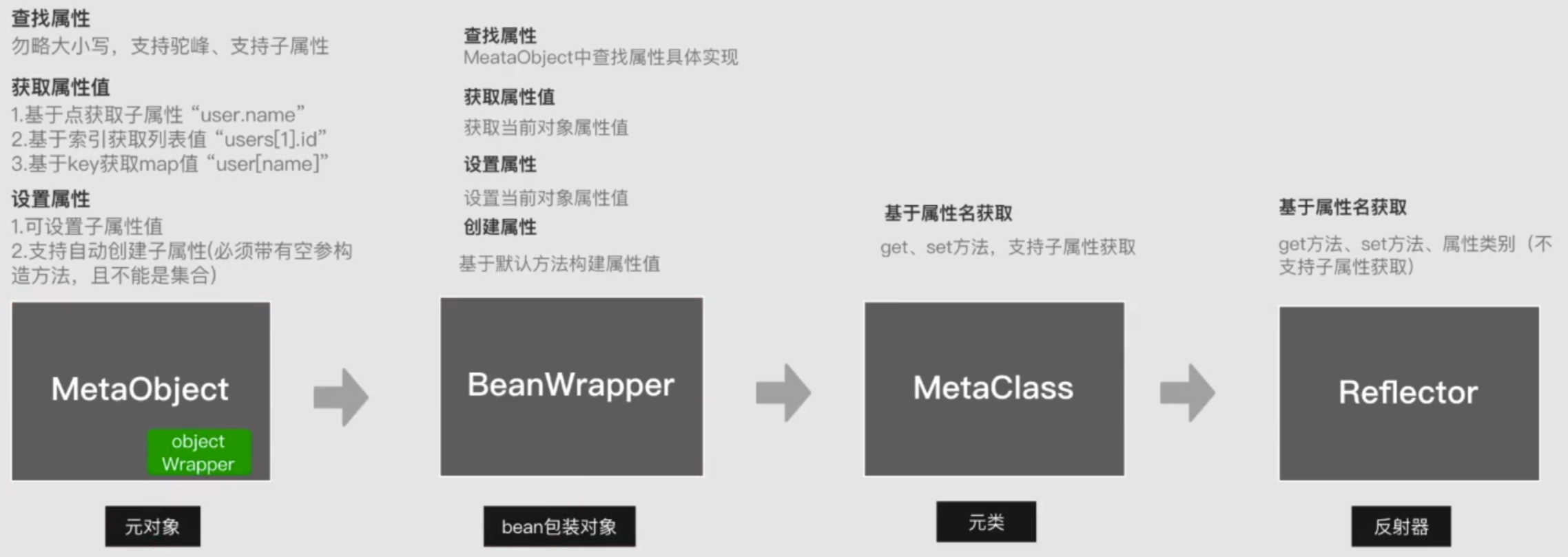
(图片来自于鲁班大叔)
三、MetaObject的getValue源码分析
我们以这样一个表达式为例,进行源码分析:
// 获取对象中users的第一个元素中的child属性中的name属性
metaObject.getValue("users[0].child.name");
MetaObject的getValue核心源码:
// org.apache.ibatis.reflection.MetaObject#getValue
public Object getValue(String name) {
// 创建属性分词器,将users[0].child.name,创建一个name=users;indexedName=users[0];index=0;children=child.name的分词器
PropertyTokenizer prop = new PropertyTokenizer(name);
if (prop.hasNext()) { // 是否有下一个子节点
MetaObject metaValue = metaObjectForProperty(prop.getIndexedName());// 继续构造一个MetaObject,对象是users[0]
if (metaValue == SystemMetaObject.NULL_META_OBJECT) { // 如果是null,直接返回
return null;
} else { // 如果不是null,就递归调用getValue方法,直到查找到最后一个属性
return metaValue.getValue(prop.getChildren());
}
} else { // 如果没有子节点,通过反射调用get方法获取属性
return objectWrapper.get(prop);
}
}
写在后面
如果本文对你有帮助,请点赞收藏关注一下吧 ~


![Mysql全解[中级篇]](https://img-blog.csdnimg.cn/97b4fc2cb073488eacb7ef85bc3f398d.png)

